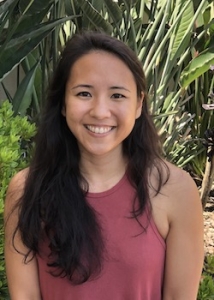
New public health research shows that emergency department (ED) visits by Native Hawaiian children with asthma account for the largest proportion of the total statewide costs for potentially preventable visits for children's asthma. Native Hawaiian children have higher rates of asthma, which usually requires daily medications and regular follow-up care. However, Native Hawaiians also face many barriers to regular health care, which leads to higher rates of visits to the ED for children's asthma attacks.

"To reduce the burden on this already socially vulnerable population, resources should be dedicated to providing trustworthy, culturally grounded and accessible asthma care for Native Hawaiian children," said Olivia Uchima, a recent graduate of the University of Hawaiʻi at Mānoa PhD in Public Health program in the Thompson School of Social Work & Public Health.
Uchima's public impact research was published in the International Journal of Environmental Research and Public Health.
For the study, Uchima and her co-authors analyzed data gathered from emergency departments across Hawaiʻi for all children ages 2 to 17 who were seen for asthma attacks over a two-year period, from 2015 to 2017. Results showed there were a total of 3,230 potentially preventable ED visits for pediatric asthma in Hawaiʻi during the study period.
Native Hawaiian children accounted for 936 visits, or 36.5% of all visits.
The finding could be attributed to Native Hawaiian children being the largest racial/ethnic population in Hawaiʻi (about 34% of Hawaiʻi's children are Native Hawaiian), however, this was not seen for other major racial/ethnic groups. For example, White children, the second largest ethnic group of children in Hawaiʻi, accounted for just 13.3% of the visits.
"Hawaiʻi needs asthma programs that reduce potentially preventable ED visits and improve health inequities," Uchima said.
Study with Native Hawaiian teens in Waiʻanae
In a related project, Uchima investigated the management of children's asthma by asking the kids themselves what they thought. The study utilized a method called Photovoice, which enables participants to use photos to express themselves.
"Children have autonomy in health decisions and are often responsible for managing their asthma," she said.
In the study, Native Hawaiian teenagers with asthma living on the Waiʻanae Coast used their phones to take pictures that represented conditions that made it easy for them to breathe, and conditions that made it difficult to breathe.
Results showed that the teens identified strenuous exercise, certain foods, dust and higher temperatures, and emotional stressors as triggers of asthma. Uchima wrote a column about the results in the Hawaiʻi Journal of Health & Social Welfare.
"It is imperative that efforts are made to identify and address the factors involved in improving asthma control among Native Hawaiian children in Hawaiʻi," Uchima said. "Future research and continued advocacy efforts are needed to improve outcomes in this community."
This research is an example of UH Mānoa's goal of Excellence in Research: Advancing the Research and Creative Work Enterprise (PDF), one of four goals identified in the 2015-25 Strategic Plan (PDF), updated in December 2020.






